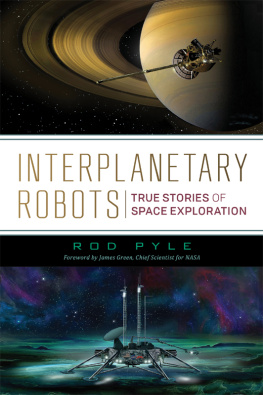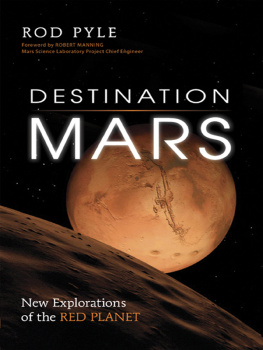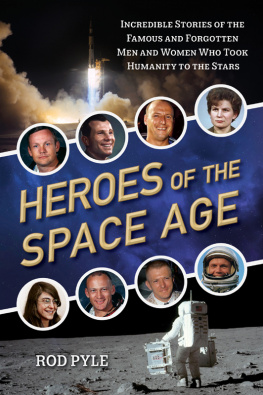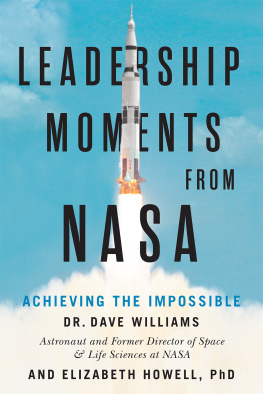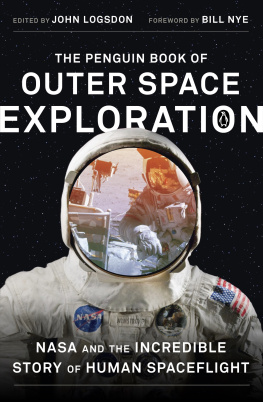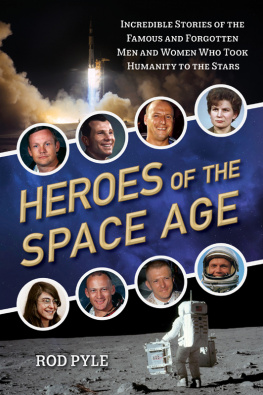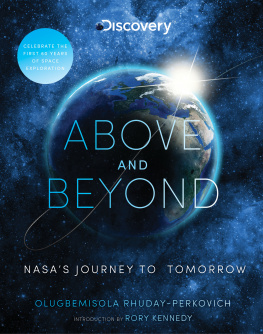Rod Pyle - Innovation the NASA Way: Harnessing the Power of Your Organization for Breakthrough Success
Here you can read online Rod Pyle - Innovation the NASA Way: Harnessing the Power of Your Organization for Breakthrough Success full text of the book (entire story) in english for free. Download pdf and epub, get meaning, cover and reviews about this ebook. year: 2014, publisher: McGraw-Hill, genre: Non-fiction. Description of the work, (preface) as well as reviews are available. Best literature library LitArk.com created for fans of good reading and offers a wide selection of genres:
Romance novel
Science fiction
Adventure
Detective
Science
History
Home and family
Prose
Art
Politics
Computer
Non-fiction
Religion
Business
Children
Humor
Choose a favorite category and find really read worthwhile books. Enjoy immersion in the world of imagination, feel the emotions of the characters or learn something new for yourself, make an fascinating discovery.

- Book:Innovation the NASA Way: Harnessing the Power of Your Organization for Breakthrough Success
- Author:
- Publisher:McGraw-Hill
- Genre:
- Year:2014
- Rating:4 / 5
- Favourites:Add to favourites
- Your mark:
Innovation the NASA Way: Harnessing the Power of Your Organization for Breakthrough Success: summary, description and annotation
We offer to read an annotation, description, summary or preface (depends on what the author of the book "Innovation the NASA Way: Harnessing the Power of Your Organization for Breakthrough Success" wrote himself). If you haven't found the necessary information about the book — write in the comments, we will try to find it.
For over half a century, NASA has delivered a continuous stream of innovative accomplishments that have inspired the world. Neil Armstrong walking on the moon, the space shuttle pioneering reusable space planes, Mars rovers exploring the red planet--the list goes on. We read the stories and watch the footage, and as impossible as these achievements seem, NASA makes them look easy.
The most innovative organization in history, NASA holds an otherworldly mystique for those of us who look on in awe. But behind every one of NASAs amazing innovations lie carefully managed operations, just like any other organization.
Innovation the NASA Way provides practical, proven lessons that will help you envision the future of your organization with clarity, meet every challenge with tenacity, and manage innovation with groundbreaking creativity.
NASA insider Rod Pyle has used the agencys unique methods for driving innovation to train leaders from eBay, the Federal Reserve, Michelin tires, Conoco/Phillips, and many other Fortune 100 and 500 companies. now, for the first time, NASAs cutting-edge strategies for nurturing and fostering innovation are revealed.
Innovation the NASA Way takes you on a tour through the programs that pushed the envelope on the agencys leadership and managerial capacity. It describes the seemingly impossible tasks NASA personnel faced, explains how each challenge was met with forward-looking management methods, and describes the extraordinary innovations that resulted.
Learn how NASA built the Lunar Module, the first true spaceship; created the Saturn Vs F-1 rocket motor, the most powerful ever built; and how it creates partnerships with the new players in spaceprivate entrepreneurs. These are just a few of the projects covered in the book.
Space exploration may be NASAs mission, but its innovative leadership practices are founded on solid, down-to-earth methods anyone can apply, anywhere.
PRAISE FOR INNOVATION THE NASA WAY:
Pyle insightfully and skillfully draws out the methods and strategies naSa has employed to achieve its lofty goals. It innovates so far outside the box that the box disappears. Pyle suggests its touchstones are boldness, daring, and passion, and he suggests you can bring those traits into your business. -- DON CAMBOU, executive Producer of History Channels Modern Marvels
Pyle highlights NASAs key innovation lessons and leaves you with amazing stories youll want to remember and use in your organization. -- STEVEN FENTRESS, Planetarium Director at Rochester Museum & Science Center
From building rocket engines to exploring Mars and beyond, Rod Pyle has written a very readable and eminently practical volume that documents the challenges, solutions, and lessons learned from NASAs storied history. To read it is to be inspired to recreate in todays challenging world NASAs daring, boldness and passion. -- STEVEN J. DICK, Former NASA Chief historian
Fuel your inspiration with this fascinating book explaining the key lessons of NASAs innovation and exploration of space. Pyles meaingful insights will improve your business. -- LUKAS VIGLIETTI, President, Swissapollo, Swiss Space Association
Rod Pyle: author's other books
Who wrote Innovation the NASA Way: Harnessing the Power of Your Organization for Breakthrough Success? Find out the surname, the name of the author of the book and a list of all author's works by series.

